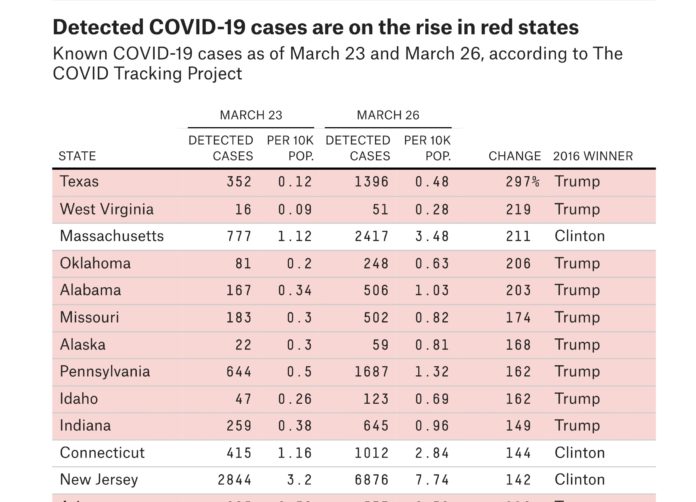Detected cases are higher in blue states, but growing faster in red states.
Washington state was the initial epicenter of the coronavirus outbreak in the United States. And New York is now the hardest-hit part of the country so far, with hospitalizations increasing at rapid rates — more than 37,000 people had been diagnosed with the coronavirus in New York as of late Thursday afternoon.
Because COVID-19 hit blue, coastal states first, and because politics is politics, the response to the pandemic hasn’t exactly been apolitical.
But blue states are hardly alone in what is becoming a nationwide epidemic. Jefferson Parish, Louisiana — which went for Trump by 15 percentage points in 2016 — has a death rate about equal to that of Manhattan. And as terrifying as the hospital situation is in New York City, hospital capacity is also under strain in states such as Michigan and Georgia.
Overall, although the number of detected cases is higher in blue states, the number is increasing at a more rapid rate in red states.1 Moreover, blue states have conducted more tests per capita than red states, so — given that the large majority of coronavirus cases remain undetected — the lower rate of cases in red states may partially be an artifact of less testing.
Here is the data as of late Thursday afternoon, with states sorted by the increase in confirmed COVID-19 cases between Monday (March 23) and Thursday (March 26).2 All data is taken from the invaluable COVID Tracking Project…
See the data, and read the full article, on Nate Silver’s Five Thirty Eight website at https://fivethirtyeight.com/features/americans-views-on-the-coronavirus-are-shifting-fast/


